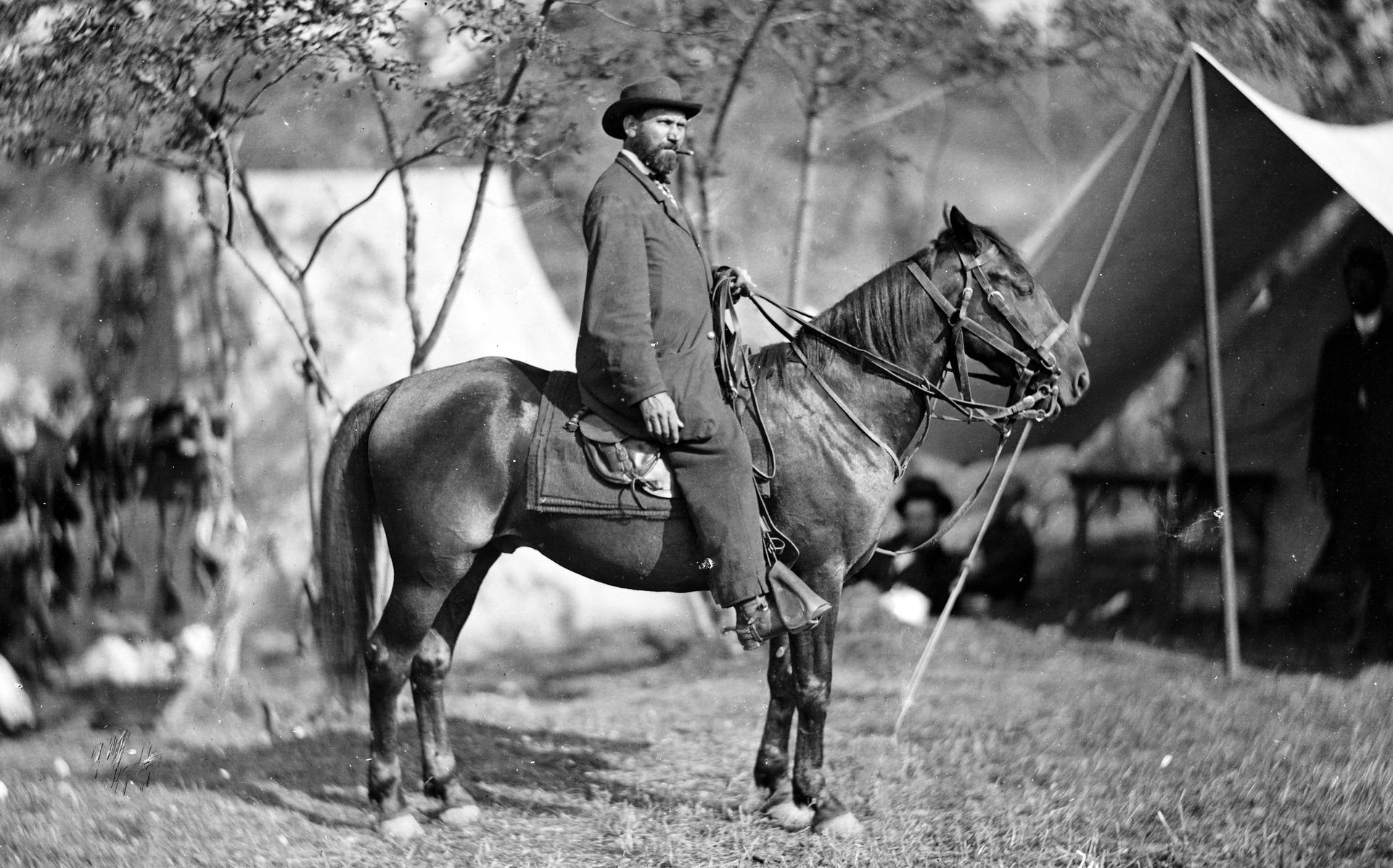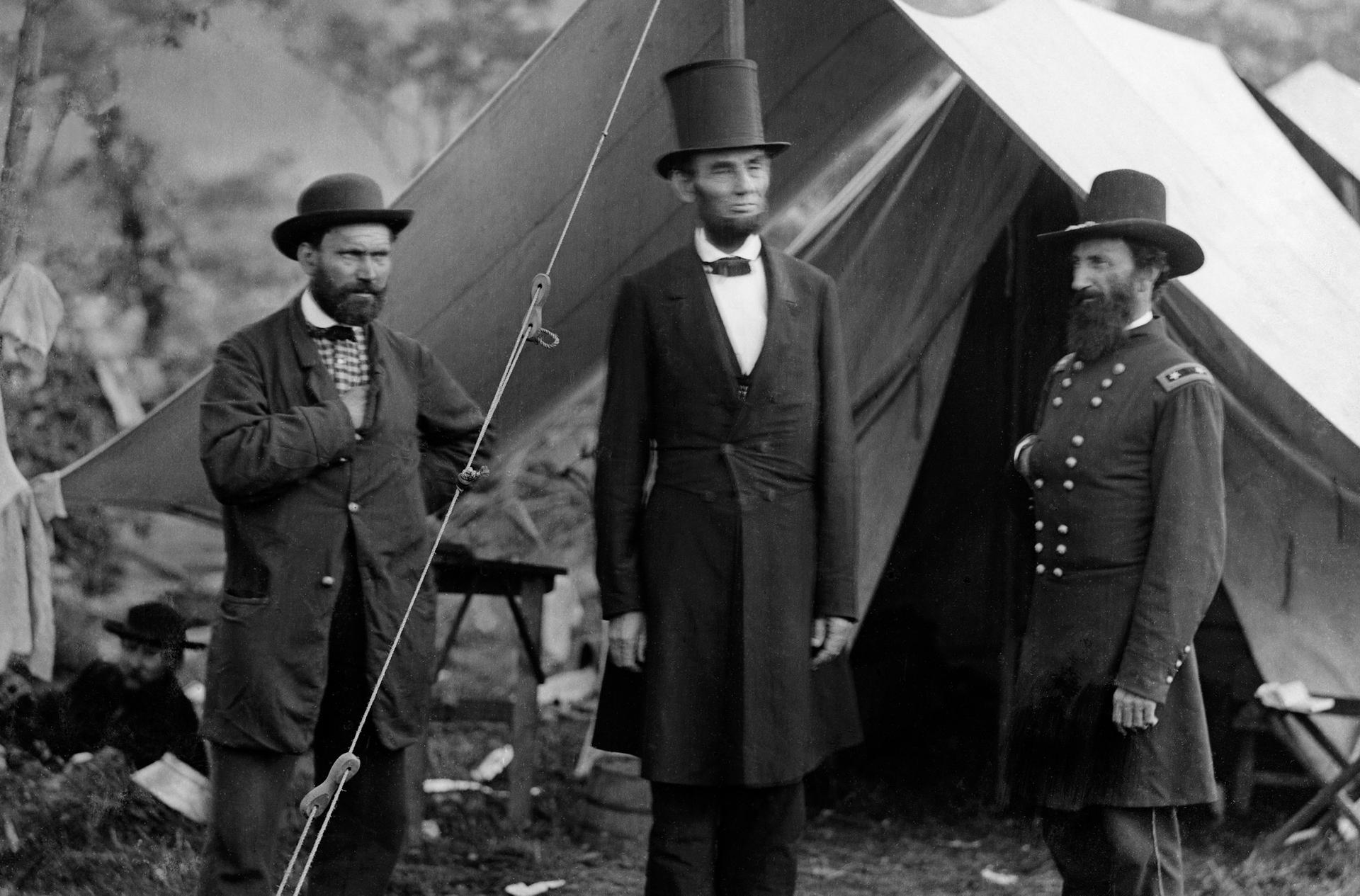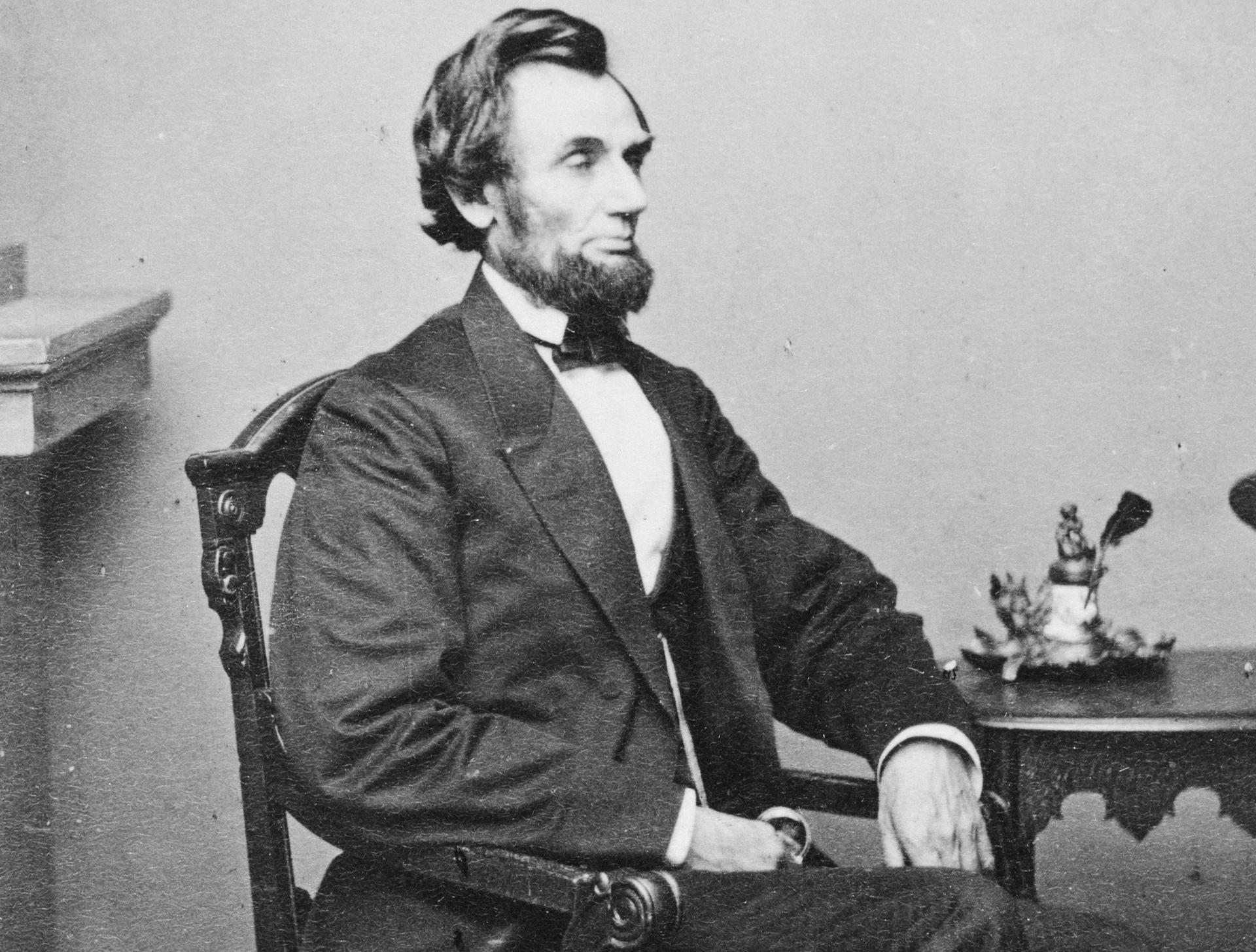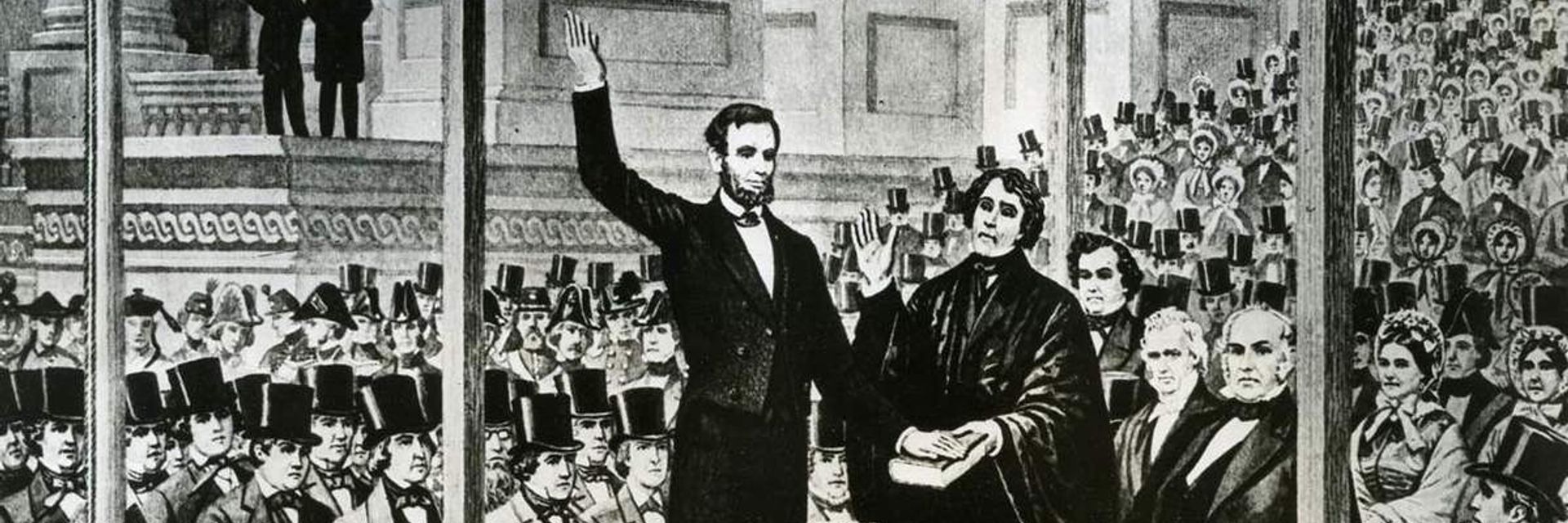After winning a multi-party election with only a plurality of the popular vote, President-elect Abraham Lincoln needed to introduce himself to the American people. He decided to make an epic train journey from his hometown of Springfield, Illinois, to Washington, D.C., hitting 11 major northern cities, and small towns in between, in 10 days. In a series of speeches, he hoped to reassure angry southerners of his commitment to moderation. But by the time Lincoln reached Philadelphia, America’s first private detective, Allan Pinkerton, convinced him that a Baltimore gang was planning to kill him when he reached that city.
◊
It is hard to grasp now how unlikely the notion of Abraham Lincoln becoming president of the United States appeared early in 1860. The very successful Springfield, Illinois, attorney had been a one-term congressman, and an unsuccessful Senate candidate. And when the newly formed Republican Party opened its convention that summer in Chicago, the well-regarded – though hardly acclaimed – Lincoln was the least likely among those considered to become the party standard bearer.
The early favorite was New York Senator William Seward (soon to be Lincoln’s secretary of state). Also in the running was Ohio Governor Salmon P. Chase (Lincoln’s first treasury secretary), Maryland Congressman Edward Bates, and Pennsylvania’s senior senator, Simon Cameron.
But Seward’s reputation as an anti-slavery hardliner denied him a first ballot nomination. Lincoln, a widely understood moderate on dealing with the threat of secession, came in second. The next ballot gained support for Lincoln from Cameron’s delegates, tying him with Seward. The third ballot clinched it for the "Rail Splitter."
Lincoln Prevails Over a Crowded Field of Candidates
The November election was another multi-candidate contest. Lincoln was opposed by the Southern Democrat John Breckenridge, the Northern Democrat Stephen Douglas – whom Lincoln famously debated in his run for Senate – and John Bell of the Constitutional Union Party.
Lincoln and his running mate, Senator Hannibal Hamlin of Maine, prevailed in the 16 states north of the Mason-Dixon line, along with California and Oregon, gaining not quite 40 percent of the popular vote and 180 votes in the Electoral College. Breckenridge carried the South – where Lincoln was not on the ballot – while Bell took the states of Virginia, Kentucky, and Tennessee. Douglas, though coming in second in the popular vote, only carried Missouri.
Southern states had drifted for years toward the inevitable showdown over the persistence of slavery. Furious with the election of the Republican candidate, seven of them – South Carolina, Mississippi, Florida, Alabama, Georgia, Louisiana, and Texas seceded from the Union a month before Lincoln took office on March 4, 1861.
Before the ratification of the 20th Amendment to the Constitution in 1933, there was a lag of four months between the presidential election and inauguration, due to the overall slowness of travel and communication in the young Republic.
Along with the broader challenge offered by the southern states, the president-elect also faced the task, unheard of in modern politics, of having to introduce himself to the American people. Without the national profile of the men he defeated, Lincoln, the first president born west of the Appalachian Mountains, felt that as many people as possible had to hear and, above all, see him before he took office.
A New Way to Meet the People
To that end, Lincoln’s team planned an unprecedented 10-day, 11-stop train journey. Beginning February 11, the trip would take him on a tour of state capitals and other major cities from Springfield to as far south as Cincinnati, Ohio, and north to Albany, New York, with public appearances every day, before arriving in Washington. Cautious of appearing belligerent, Lincoln declined a military escort for the journey, and there was then no Secret Service to guard him.
It was a physically exhausting excursion in which Lincoln traveled with his family, staff, reporters, and a small group of friends acting as personal bodyguards. Already despised by many below and above the Mason-Dixon line, the greatest risks to Lincoln’s safety for most of the trip (despite rumors of an unexploded bomb discovered in Cincinnati) came from the thousands who appeared at every personal appearance.
In Buffalo, New York, one of Lincoln’s bodyguards had his shoulder dislocated in a crush of people. Though many spectators were injured during Lincoln’s trip, it’s a miracle no one was trampled to death.
Covered daily by newspapers, and written about in dozens of memoirs in decades to come, what stands out now is Lincoln’s abiding tolerance of others, and the great good nature he displayed throughout. He lost his temper only once, in Indianapolis, after realizing his son Robert had left the bag containing the draft of his inaugural address with a hotel bellhop. Surprising bystanders, the 6-foot-6 Lincoln pushed his way through a crowd and climbed over the hotel’s front desk to retrieve the bag from a pile of luggage.
It also seems miraculous, knowing how it ended, that no direct attempt was made on Lincoln’s life. The four-car “Lincoln Special” was preceded by a scout engine, given priority above other rail traffic, and attended every mile by flagmen alert to any trouble. Though it clipped along at a nearly supersonic 30 mph, the train needed to make frequent stops to fill its boiler, allowing Lincoln to make short appearances on the train’s rear platform.
He addressed predominantly adoring crowds while giving short speeches that he hoped would reassure angry Southerners. His schedule was widely published to maximize turnout. Though this served a practical political aim, it was a logistical nightmare for one man obsessed with Lincoln’s safety, one whose name would become synonymous with detective work.

Allan Pinkerton shown during his work as Chief of Union Intelligence in 1862. (Image Credit: Library of Congress)
America’s First Private Detective
Earlier that month, Allan Pinkerton discovered what he believed to be a plot to murder Lincoln as he changed trains in Baltimore, which required moving from one station to another over a mile away for the last leg of the journey to Washington.
Pinkerton was a Scottish immigrant, a barrel maker by trade. Settling in rural Illinois, he helped break up a counterfeiting ring in 1848. By then a passionate abolitionist (a friend of John Brown and Frederick Douglass), he ran an Underground Railroad stop. He was dedicated to fighting crime and, at age 30, he opened his detective agency in Chicago in 1850, soon gaining work providing security details for above-ground railroads.
Today notorious for its violent work as a strikebreaking force, the Pinkerton agency did not gain its hated, anti-union reputation until after Allan Pinkerton’s 1884 death.
It was in his capacity as a railroad agent that Pinkerton traveled to Baltimore in early February 1861 to assess the danger to the Philadelphia, Wilmington, and Baltimore line, the only one connecting Maryland, a slave state, with points north.

Pinkerton, at left, keeps his eagle eye trained on President Lincoln while visiting with Gen. John McClerland at the Antietam battlefield, 1862. (Image Credit: Library of Congress)
Posing as a wealthy southern stockbroker, and overseeing a crew of undercover operatives, including the first female private detective, Kate Warne, Pinkerton discovered the outlines of an active plot against Lincoln’s life,
Danger in Baltimore
Though Maryland never joined the Confederacy, it would remain a center of rebel sympathy. Baltimore was also notorious for its street gangs. (It was nicknamed “Mob Town” 150 years before The Wire.) Pinkerton believed that at least one of the gangs, led by a hotel barber from Corsica named Ferrandini, planned to surround and stab Lincoln after diverting his guards.
Baltimore was the only city on Lincoln’s itinerary where he had not been invited to speak. Such was its anti-Union sentiment that Pinkerton did not trust the police to provide adequate security. So he devised a plan to spirit Lincoln through the city ahead of his published itinerary. Though the detective had been in contact with Lincoln’s chief bodyguard, the president-elect was not told of the suspected plot until a security meeting with Pinkerton and others in Philadelphia.
Lincoln was inclined to dismiss Pinkerton’s concerns as rumors. But, as told in The Hour of Peril, by historian Daniel Stashower, William Seward’s son Frederick (sent from Washington by General Winfield Scott, the Army’s chief commander then in control of District security) delivered Army intelligence independently confirming many details of Pinkerton’s report.
Lincoln reluctantly agreed to Pinkerton’s plan, saying, “Unless there are some other reasons beside fear of ridicule, I am disposed to carry [it] out.” He refused to leave early however, having promised to raise the flag at Independence Hall the next morning (February 22nd, George Washington’s birthday) and then travel to Harrisburg to address the Pennsylvania legislature.
A Long Run in the Dead of Night
Following his speech, Lincoln slipped out of Harrisburg for a 250-mile trip over the course of a long night. To Pinkerton’s dismay, Lincoln revealed the plan to his wife and Pennsylvania Governor Andrew Curtin. The governor told reporters that Lincoln retired early to the executive mansion. In fact, the president-elect was departing on a special three-car express train Pinkerton had hired to carry him and a single bodyguard to Philadelphia. The detective met them there after nightfall.
To stop word leaking out, a Pinkerton ally blocked all telegraph traffic out of Harrisburg for the special train’s three-hour run. But the plan to get Lincoln to Philadelphia worked slightly too well: The train arrived early, with over an hour before the train to Baltimore was scheduled to depart.
Hustling Lincoln, dressed in a long cloak and slouch hat, and his bodyguard into a closed horse-drawn cab, Pinkerton directed the driver to different points in the city. Back at the station just minutes before the scheduled departure, the president-elect’s party, now including detective Warne, who had reserved a private sleeper for her “invalid brother” at the rear of the train, finally left for Baltimore.
Arriving there about 3 a.m., Lincoln’s car was decoupled from the Philadelphia train. It was then drawn by horses on a tense 45-minute trek through the hostile city to the Baltimore and Ohio Railroad depot, where it was attached to the early train to D.C.
Detraining in Washington at first light, Lincoln and his two bodyguards were surprised when a man approached. “How are you, Lincoln?” he said, extending his hand just as Pinkerton knocked him to the ground. It was Illinois Congressman Elihu Washburne, alerted to the arrival by William Seward. Lincoln told Pinkerton not to hit him again and helped his old friend to his feet. The journey to Washington at last completed, Lincoln and his protectors proceeded to his suite at the Willard Hotel.

Abraham Lincoln poses for photographer Alexander Gardner the day after his 1861 arrival in Washington.
(Image Credit: Library of Congress)
Questions remain as to the true extent of the threat against Lincoln in Baltimore. And indeed, once newspapers ran the story of his secret trip from Harrisburg, the new president was widely mocked. But certainly General Scott, who took his duty to secure Washington for the inauguration very seriously, believed the threat was real.
A Famous Speech in an Armed Camp
Scott had called in thousands of troops from different parts of the country, confident in their loyalty to the Union. Wary of local militias, the 74-year-old hero of the Mexican War personally commanded a battery of light artillery he placed on Capitol Hill, promising to blow to pieces any insurgents interfering with the inauguration. With Army snipers stationed on rooftops, Washington was an armed camp, and would remain one for four terrible years.
In his inaugural address before an uneasy audience, Lincoln pledged to protect federal property, said that the Union could not be dissolved, and declared that any armed attack would be considered a rebellion and answered accordingly. His closing remarks, suggested by Seward and added at the last minute, perhaps reflect what Lincoln saw during his fraught 10-day, 1,900-mile journey to Washington.
“The mystic chords of memory,” he told his listeners, “stretching from every battlefield, and patriot grave, to every living heart and hearthstone, all over this broad land, will yet swell the chorus of the Union, when again touched, as surely they will be, by the better angels of our nature.”
Four years later, in 1865, after a term in office in which he showed great personal courage in his public appearances, Lincoln was assassinated. His coffin was carried to Springfield along the same route that first brought him to Washington.
Ω
Title Image: Abraham Lincoln receiving oath of office from Chief Justice Roger Taney.
(Credit: Library of Congress)

